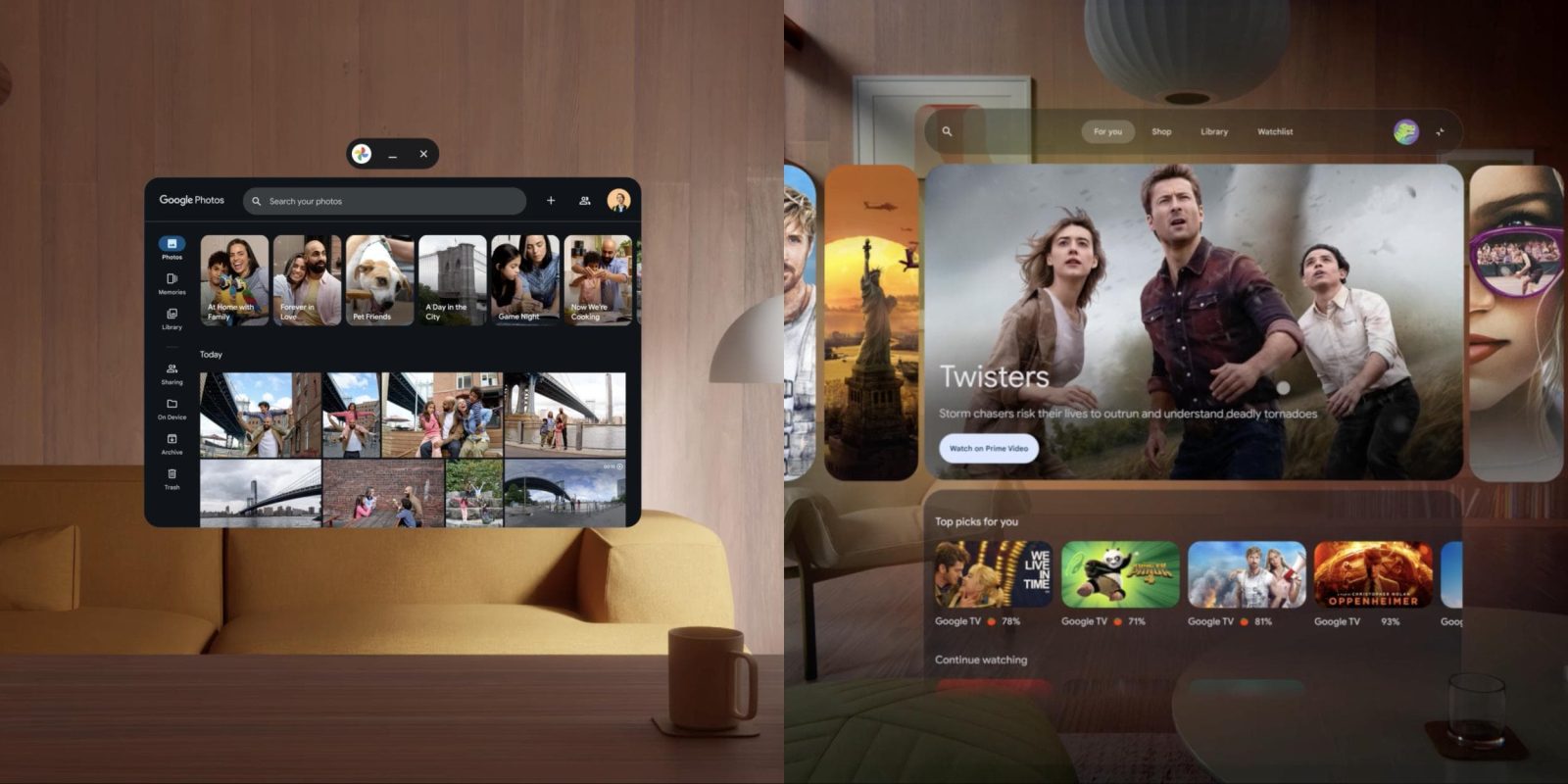
Besides phones and tablets, Android is available on smartwatches, TVs, and even cars. Google today announced Android XR as the next form factor the operating system is coming to.
Google is using the catch-all term of extended reality (XR) to describe virtual (VR), mixed (MR), and augmented reality (AR). Android XR is for all device types, including headsets that offer video or optical see-through, screen-less “AI glasses,” and AR glasses with displays.
Going into Android XR, Google believes it has a proven track record of creating platforms. That is more than just making an operating system for themselves, but also catering to OEM partners, cultivating a developer ecosystem, and managing an app store.
However, Google has done all this before to a lesser extent with Glass, and to a greater degree with Daydream VR. The phone-based approach to VR and later standalone headset ultimately failed, and Google exited around 2019. It remains to be seen how others adopt Android XR, but Google already has major partners in Samsung and Qualcomm:
For Qualcomm partners like Lynx, Sony and XREAL, we are opening a path for the development of a wide array of Android XR devices to meet the diverse needs of people and businesses. And, we are continuing to collaborate with Magic Leap on XR technology and future products with AR and AI.
Google thinks this time will be different, and believes that the vision it had with Glass/Daydream was correct, but that the technology wasn’t ready. There have of course been advancements in displays, sensors, and processing, but Google believes that Gemini is the primary differentiator and that digital assistants are the “killer app” for XR.
Gemini will see and hear what you do. This lets you ask questions about what you’re viewing both in the real-world and on your device’s screen. It will be a new conversational interface to control the OS and apps. In fact, Google says Android XR is the first OS built from the ground up with Gemini.
For the Android XR user experience, read our hands-on.
Google and Samsung are starting with the headset, which both consider a good starting point. Samsung has a developer kit called Project Moohan (or “infinity” in Korean) that is lightweight, has an external battery, and powered by the Snapdragon XR2+ Gen 2.
With headsets, you can effortlessly switch between being fully immersed in a virtual environment and staying present in the real world. You can fill the space around you with apps and content, and with Gemini, our AI assistant, you can even have conversations about what you’re seeing or control your device.

Google imagines Android XR headsets as offering an infinite desktop for productivity. In this scenario, you’re at a desk with a physical keyboard and mouse. A few partners already have this dev kit and more are being distributed to partners starting this week. Meanwhile, first-party apps like Chrome, YouTube, Google TV, Google Photos, and Google Maps are being optimized for Android XR.
However, glasses are the end goal and frames running Android XR are coming for “directions, translations or message summaries without reaching for your phone,” though they are paired like any other wearable. The final realization of this vision is in-lens display. However, Google does not think that displays are a must, and this opens the door to display-less glasses that have microphones and cameras for input, while Gemini capably handles output.
Google will “soon begin real-world testing of prototype glasses running Android XR with a small group of users.”
This will help us create helpful products and ensure we’re building in a way that respects privacy for you and those around you.
Be sure to read our hands-on with Android XR glasses.
Google today is releasing the Android XR SDK Developer Preview, which is “built on the existing foundations of Android app development.” The Jetpack XR SDK includes:
- Jetpack Compose for XR – enables you to declaratively create spatial UI layouts and spatialize your existing 2D UI built with Compose or Views
- Material Design for XR – includes components and layouts that automatically adapt for XR
- Jetpack SceneCore – provides the foundation for building custom 3D experiences
- ARCore for Jetpack XR – brings powerful perception capabilities for your app to understand the real world
There’s also an Android XR Emulator (as part of the latest Android Studio Meerkat preview). Unity will be supporting Android XR, while Chrome on Android XR supports WebXR. There’s also support for OpenXR 1.1.
An Android XR Developer Bootcamp in 2025, with interested parties able to express their interest here.
FTC: We use income earning auto affiliate links. More.




